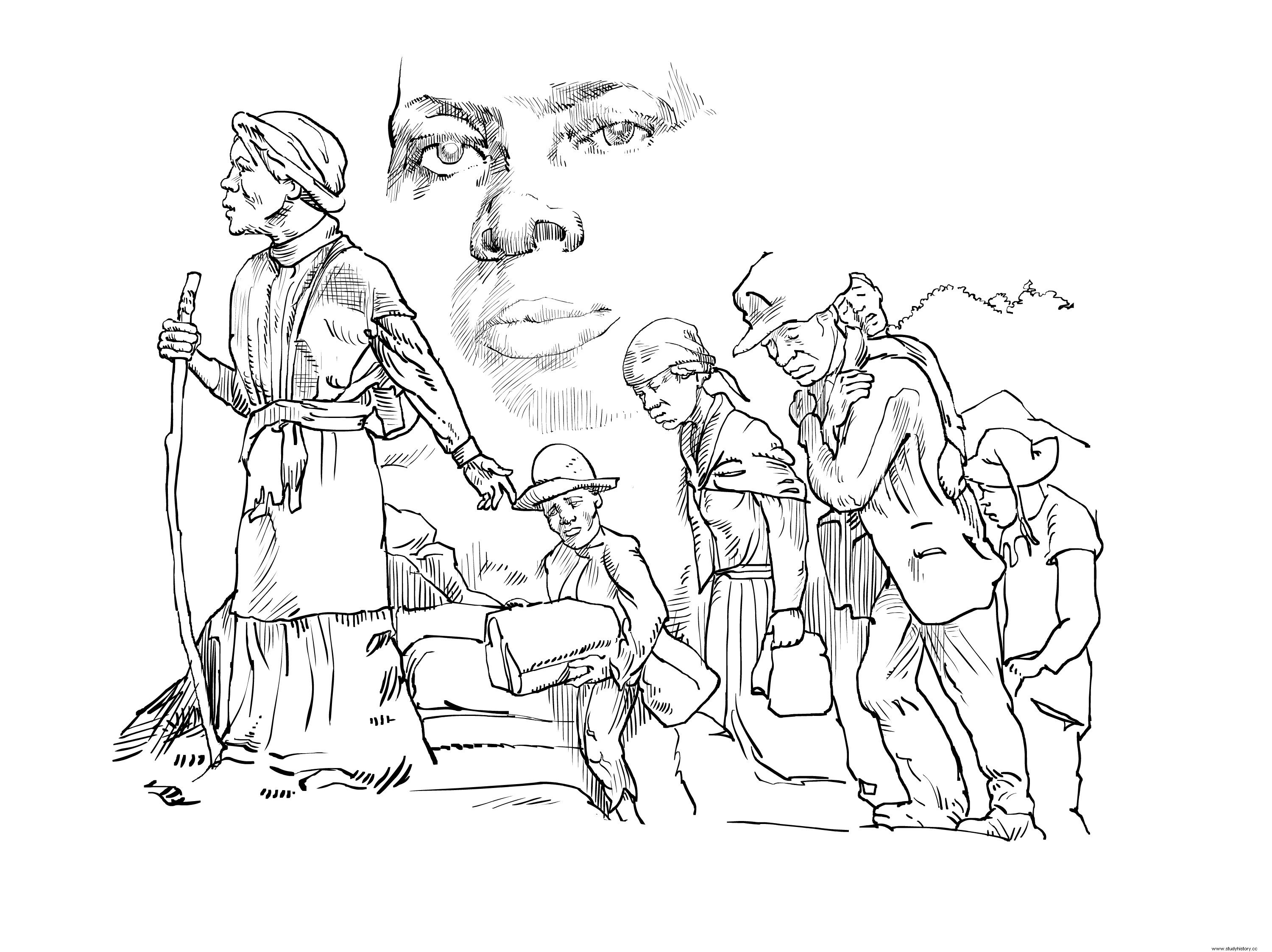There was no train, nor was there a driver. The Underground Railroad (Underground Railroad) was a clandestine network that operated from the beginning of the 19th century until the beginning of the US Civil War, although more actively since the 1930s, and that helped African-American slaves escape from slave plantations and took to Canada. Its name is due to the fact that railway terms were used to refer to its activities and its members:the drivers (those who guided them along the escape routes), the lines (the routes themselves), the passengers (the escaped slaves) and the stations (the places where to give them shelter until the next destination). This network of routes extended through fourteen states and its final destination was Canada, the "Promised Land" where fugitive slave catchers did not arrive. The group of machinists were made up of abolitionists, leaders of Methodist churches and, above all, freed members of the black community (including former slaves). And among all these machinists stood out Harriet Tubman , the Moses of the slaves .

Harriet Tubman
Born in 1821 on a Maryland plantation, at the age of five Harriet was already working in her master's house, and at twelve on the cotton plantations. From a very young age, she showed that her thing was not to bite her tongue and she earned more than one blow or whiplash for coming out of it in defense of other slaves. One of these blows would mark her head with a scar and give her headaches for the rest of her life. In her early twenties she married a freedman named John Tubman , from whom she took her last name. After the plantation owner died, the slaves who worked in the house warned the rest that the widow's intention was to sell the land and the slaves. That massive sale implied, with all certainty, that the families would be broken and their members dispersed over various plantations. Harriet decided it was time to try and escape with her family. Her husband tried to convince her not to do it, and at that moment he knew that he did not want that man, who had been her slave and should understand and support her, with her.
Freedom or death; if I can't have one, I'll have the other.
On September 17, 1849, Harriet fled with two of her brothers, Ben and Henry. The vertigo of the flight and the fear of being captured were stronger than the desire for freedom, and her two brothers decided to return. Harriet hugged them and told them that she would come back for them. The reward for her capture was set at three hundred dollars. As a passenger on the Underground Railroad, she made it all the way to Canada. From that moment on, she became a machinist and managed to take more than three hundred slaves to the Promised Land, including her family (except her husband). Accompanied by her courage and a pistol hidden under her robes, between 1851 and 1860 she traveled to the South nineteen times and never lost a passenger along the way. If we add the amounts offered by all the slavers who had suffered Harriet's travels, in 1856 the reward for her capture reached... Forty thousand dollars!!! Still, no one ever betrayed her. With the outbreak of the Civil War in 1861, the activities of the Underground Railroad ceased, but not Harriet's involvement with what she considered her role in her life.

She believed that the war would put an end to slavery and she was not going to allow that train to pass without boarding. She left the safety of Canada and volunteered for the Union Army to help in any way she could. She started out as a nurse, but when Colonel James Montgomery She found out about her work for years on that particular "railroad" and the knowledge of the escape routes, she proposed to cross the enemy lines and act as a spy. Said and done. She set up an espionage network and, in addition to passing on information on Confederate units and ammunition depots, she took advantage of her new status to continue taking out slaves who joined the Union army. When she received her first paycheck from her, she spent it building a cabin where freed black women could earn a living washing clothes for soldiers. In fact, the two hundred dollars she received from her during her three years of service—a paltry amount of what she was legally entitled to—went to support those women. After the war, she married Nelson Davis , a Union soldier she had met on the front lines, and they settled in Auburn, New York. At forty-four years old and with everything she's done so far, Harriet deserved to start a quiet life with her new husband... but she wasn't like that. When she applied for the military pension that she was entitled to, it was denied, and it would only be granted in 1888, when her husband died, but as the widow of a war veteran. Despite the financial difficulties of the newlyweds, they were getting by with Nelson's odd jobs and the bake sales and gingerbread she prepared, turning her house into a home for the destitute and elderly blacks. Overwhelmed by all who requested her help, Harriet undertook a tour of all the towns where there were stations of the old Underground Railroad to raise funds. With the money raised, she built another house next to hers so she could serve more people.
For years she continued to fight for equal rights between races and between genders, including universal suffrage. In 1913, and due to pneumonia, that slave, machinist, nurse, spy, abolitionist, suffragist, social activist... The last words of Harriet, the Moses of the slaves, they were…
I go ahead to prepare a place for you
Source:Neither stupid nor crazy
Illustration:Xurxo Vázquez
